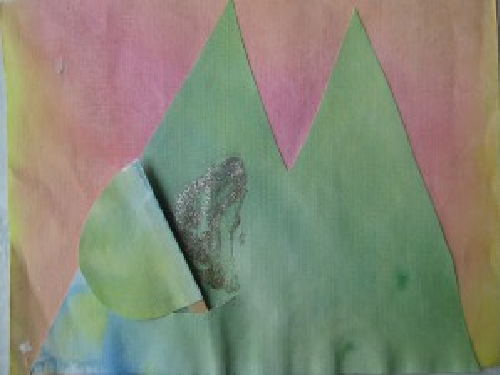First Grade Fairy Tales and Letters Main Lesson
One of the quintessential first grade main lesson blocks is Fairy Tales and Letters.
First grade language arts is a continuation of the kindergarten years when you surrounded your child with the rhythms of oral language. In Waldorf-inspired homeschooling we teach language arts holistically beginning always with beautiful language in story, literature, poetry, and song. This is also the year to begin first lessons in translating those sounds into written language.
Fairy Tales and Letters Main Lesson
The first language arts main lessons usually focus on introducing the letters in a meaningful and magical way. You can do this by telling fairy tales, drawing pictures from the stories, and then “discovering” the letters hidden in the drawings. Even children who already know how to read love to do this!
The reason we teach the consonants from picture images is that we’re recapitulating the evolution of the alphabet in human history. People had oral language for eons before they began to develop written language out of pictures. The first writing was pictorial with simple pictures standing for words. Over time the pictures became more stylized, uniform, and representative. Out of these came the symbols or capital letters that we use today. We capture the metamorphosis of sound to picture to letter in our first lessons on written language.
The Main Lesson Rhythm
New information is presented in main lesson over the course of two to three days. This main lesson rhythm allows your child to take in what she’s learning more deeply. Here’s an example of a fairy tales and letters main lesson rhythm:
Day 1 - Practice something that has been learned before and then work on form drawing or painting. Close the lesson by telling a new fairy tale.
Day 2 - Recall the story together and draw a picture from the story.
Day 3 - Discover the letter hidden in the picture and practice the letter sound and form.
This basic rhythm forms the backbone of your lessons and then it’s important to flesh them out with more activity using the head, heart, and hands. See these two back posts on holistic first grade here and here for ideas on bringing your main lessons to life!
frequently asked questions about the first grade fairy tales and letters main lesson
How do you draw the pictures with your child? Do I need to do a chalkboard drawing?
I recommend that you prepare a drawing in advance and show it to your child the day after you’ve first told the story. You can do your drawing on the chalkboard or on a large sheet of drawing paper. Then, when it’s time for your child to draw, sit down and draw with him! Show him step by step how to make a beautiful crayon drawing (each on your own paper).
If you need help learning how to draw with block crayons or ideas for how to compose your main lesson book drawings, Coloring with the Block Crayons (book or dvd) and the Lavender’s Blue curriculum are both great resources.
How long should it take to go through all the letters?
This is really up to you! Some families like to cover all the letters in the fall and then move on to writing story summaries and learning word families in the spring. Others take all or most of first grade to move through the alphabet.
My only strong recommendation here (besides thinking about what would work best for you and your child) is to leave plenty of time for math in first grade. I recommend scheduling three math main lesson blocks for twelve weeks or so total (often October, January, and April work well for math) and then using the rest of your first grade weeks for language arts and other subjects you want to cover.
Should I present all 26 letters this way?
Again, you get to decide! I think it’s fun to go through all the consonants this way, but not all teachers do, and that’s fine. You can bring more than one letter in per story. Vowels are usually presented differently than the consonants, coming more from the feeling or soul mood of a story than from a picture. In the Lavender’s Blue curriculum we cover all 26 letters in 8 weeks in the autumn (split between two Fairy Tales and Letters main lesson blocks).
Should we cover the lowercase letters in the same way?
While the capital letters are very old and archetypal, the lowercase letters developed much more recently in human history and are more functional. They were invented to allow scribes to write more quickly. For this reason I don’t recommend a pictorial progression for lowercase letters. Instead, sometime after after your child is comfortable and confident with recognizing and writing the uppercase letters, you can just introduce lowercase letters as the small versions of the capitals.
What if my child already knows her letters or is already reading?
Many children enter first grade already knowing the alphabet or even how to read. If that’s the case, don’t worry! Your child can continue to enjoy reading at his own pace and still do this main lesson block. A holistic main lesson involves so much more than just learning the academic skills. Many early readers love to re-discover the alphabet in this way.
And if you're looking for a first grade curriculum that does the heavy lifting for you, with beautifully planned and illustrated main lesson blocks, I think you'll love Lavender's Blue First Grade.




